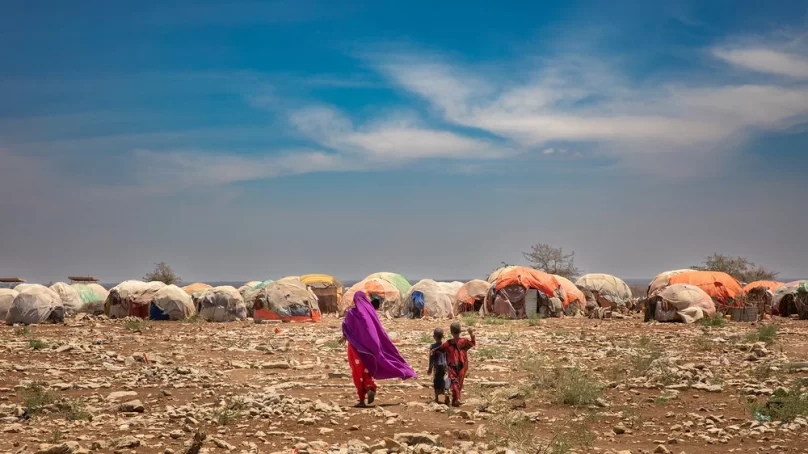
Famine “is at the door” in Somalia, with “concrete indications” that parts of the south-central Bay region will be in famine between October and December this year without an urgent surge in aid, the UN warned today.
“This is the final warning to all of us,” the UN’s humanitarian chief, Martin Griffiths, told a press conference in the Somali capital, Mogadishu. “This is the last minute of the eleventh hour to save lives.”
A two-year drought, mass displacement, decades of war, and a so-far sluggish aid response means more than seven million people – almost half the population – are already chronically hungry. In May, at least 213,000 people in the Bay region were in “catastrophe” – a technical term for starving.
But despite growing evidence for months of the looming crisis, aid has been slow to arrive. In April, the UN’s $1.5 billion response plan was just 17 per cent funded, only reaching 70 per cent in August. As a result, there have been repeated fears of “pipeline breaks” in relief delivery.
“Much of that donor money has come in the last month, but what can you do in just one month to meet needs?” said a UN official, who asked for anonymity so they could speak freely. “Why didn’t they frontload the aid and act earlier?”
Somalia’s last famine was in 2011, when 250,000 people died as a result of drought and conflict. “The situation and trends resemble those seen in 2010 and 2011, but now they’re worse,” said Griffiths.
Four seasons of back-to-back drought has driven more than a million people from their rural homes. Mostly women and children, they have camped in packed settlements of bivouacs, made from scrounged bits of old cloth on the outskirts of towns – more reliant on the generosity of the local community than aid agencies.
“The situation and trends resemble those seen in 2010 and 2011, but now they’re worse.”
Crop failure and the decimation of livestock herds have been compounded by rocketing food prices. In June, the cost for a household to meet its basic food needs was between 56 and 110 per cent higher than the five-year average in some of the hardest-hit regions, according to the World Food Programme.
Even if the rate of aid deliveries does pick up, a La Niña-induced failure of the October rains is forecast, which will trigger an unprecedented fifth drought season and a “humanitarian catastrophe” that will likely last through to March 2023, said Griffiths.
The following briefing explores both the technicalities of famine, and the political failure that underpins it.
What is famine? Famine is a highly technical classification that meets three specific criteria: At least 20 per cent of households in a given area face an extreme lack of food; more than 30 per cent of children under five in the sample group are acutely malnourished; and at least two people out of every 10,000 are dying daily from hunger-related causes (in a non-crisis sub-Saharan African country, the rate is around 0.3).
The analysis is led by the Integrated Food Security Phase Classification (IPC) system, made up of UN agencies, international non-profits, and governments. The IPC’s hunger gauge – from Phase 1 “minimal” to Phase 5 “famine” – has become the globally accepted barometer of food insecurity.
A famine declaration is a last call for action when all the early warning designed to prevent famine has gone unheeded. As such, it marks the “failure of the humanitarian system”, José Lopez, IPC’s global programme manager, told The New Humanitarian.
Only two famines have been declared since the IPC system was launched in 2004: Somalia in 2011; and South Sudan in 2017, when conflict-related starvation threatened 80,000 people in parts of Unity State.
As famine occurs in areas where almost by definition data is hard to gather, there’s a little wiggle room in the classification system, even within Phase 5:
“Famine likely” means it’s probably underway – or will be in the near future, but the evidence is not all there yet to declare a Phase 5 Famine.
A “famine projected”, as in the case of Somalia today, means there’s a “narrow window” to act to prevent what otherwise will become a full-fledged famine. The Phase 5 catastrophe category signals individual households are experiencing starvation, but less than 20 per cent of the overall population in the given area are in famine conditions.
It’s important to note that the IPC system measures intensity rather than magnitude: The focus is on the proportion of people starving in a given area rather than the absolute number experiencing famine. It’s also only a snapshot of what has already happened. When famine is declared, it’s in a sense too late – deaths are already occurring.
- The New Humanitarian report











